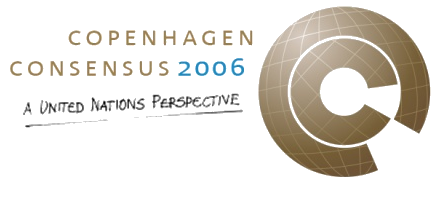Background
Since we live in a world of limited resources, it is crucial to put focus on the priorities that policy makers make as well as improve the foundation upon which this prioritization takes place. This was the main focus of the conference Copenhagen Consensus 2006 – A United Nations Perspective which took place in New York from the 27th to 28th of October 2006.
The conference was a continuation of the highly successful conference Copenhagen Consensus 2004 (CC04), where eight outstanding economic experts, delivered their recommendations and economic analyses on how to prioritise the ten biggest global challenges. This year the challenges was put into the political agenda by giving a UN Perspective on the global challenges:
- Climate Change
- Communicable Diseases
- Conflicts
- Education
- Financial Instability
- Governance and Corruption
- Malnutrition and Hunger
- Population: Migration
- Sanitation and Water
- Subsidies and Trade Barriers
CC UN Pespective brought together selected UN ambassadors, who are actually at the natural nexus of policy and economics in solving the world's problems.
How to solve the biggest global challenges?
During the CC UN Perspective program there was presentations from both economic experts and UN experts within each challenge area based on background papers on the cost and benefits of implementing solutions to the global challenges. After the presentations, a group of UN ambassadors considered and ranked 40 solutions to the challenges according to their potential for doing the most good in a cost-effective way.Finally, the individual prioritizations of the UN ambassadors were made anonymously and the overall ranking of all ambassadors, based on the median, was published.
The idea behind bringing the UN-ambassadors together to rank the solutions to the biggest global problems was to transfer a merely academic debate among economic experts to the highest administrative and political level in the world represented by the UN ambassadors. The aim was to disseminate the understanding of the need to prioritise limited resources. The outcome of the CC UN Pespective resulted in a ‘to do' list of the UN.
To read more about the background please download the pdf.

